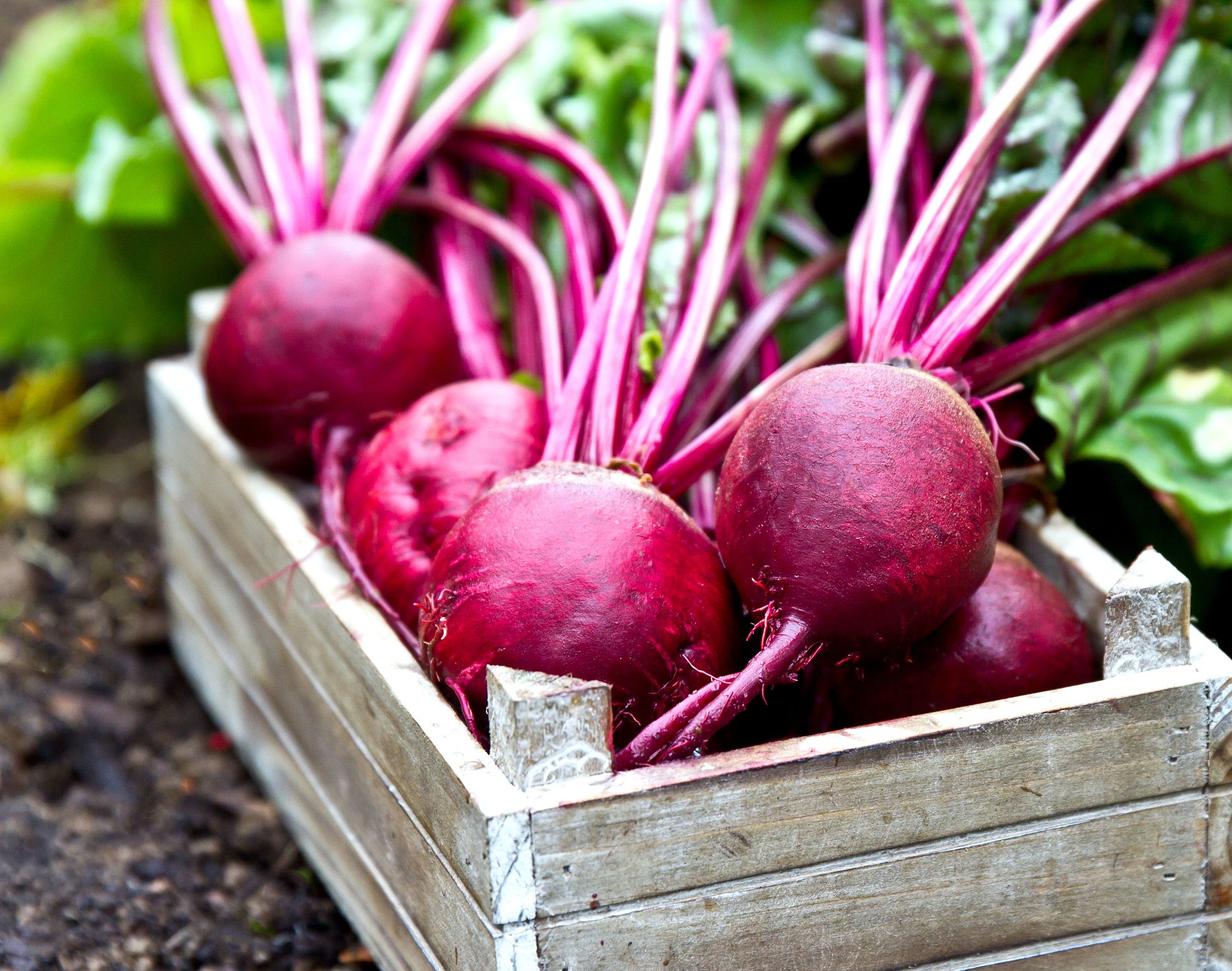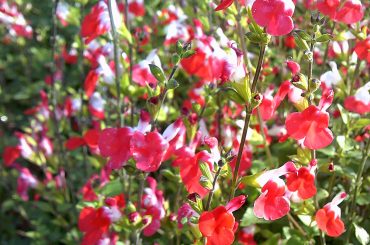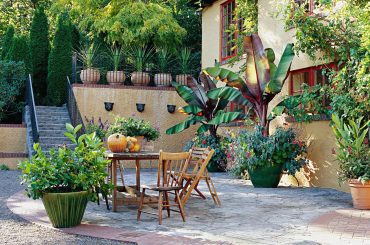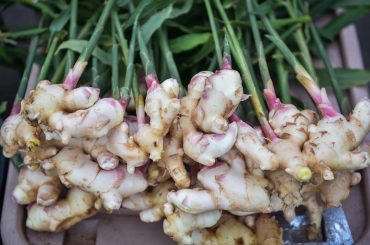Table of Contents
Beta vulgaris, also known as “beetroot,” is a pleasant, wholesome, and antioxidant-rich vegetable. Despite not being one of the more attractive garden veggies, beetroot has recently gained popularity and has even been dubbed a “Super Food” by medical professionals.
This is a significant factor in the renewed interest in beetroot among kitchen gardeners. These have a delightfully sweet and colourful flavour, are incredibly easy to grow from seed, and are stuffed with vitamins and minerals. Read more to know how to grow Beetroots from Seeds.
Beetroot is usually an easy food to cultivate and is one of the top 10 vegetables grown in home gardens. Keep reading to find out how easy it is to grow Beetroots at home.
These plants are the ideal option for tiny spaces because they can even be grown in containers and take up very little room when harvested. The leaves have a decorative appeal and are also delicious.
Here are some easy-to-follow instructions for growing a beetroot plant right from the start- seeds.
When to Plant Beetroot Seeds
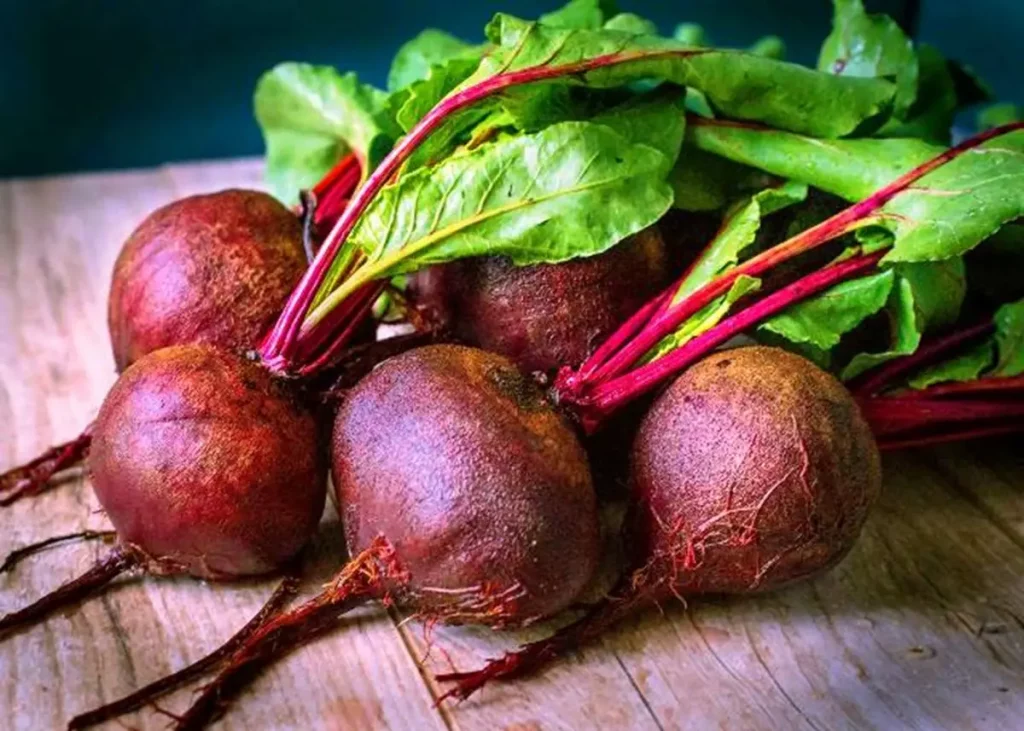
In the UK, beetroot can be sown from March until August. It is best to start early to give your beetroots the best chance of survival. Since the ground is warm enough at this point in March, planting time is ideal. Nevertheless, if you have a polytunnel or cloche, you can get a head start by sowing indoors in February and planting outdoors under one of those structures in March.
As soon as the soil is suitable for planting, begin your first round of beets in the early spring. Until mid-summer, make additional plantings every two to three weeks.
Where to Grow Beetroot
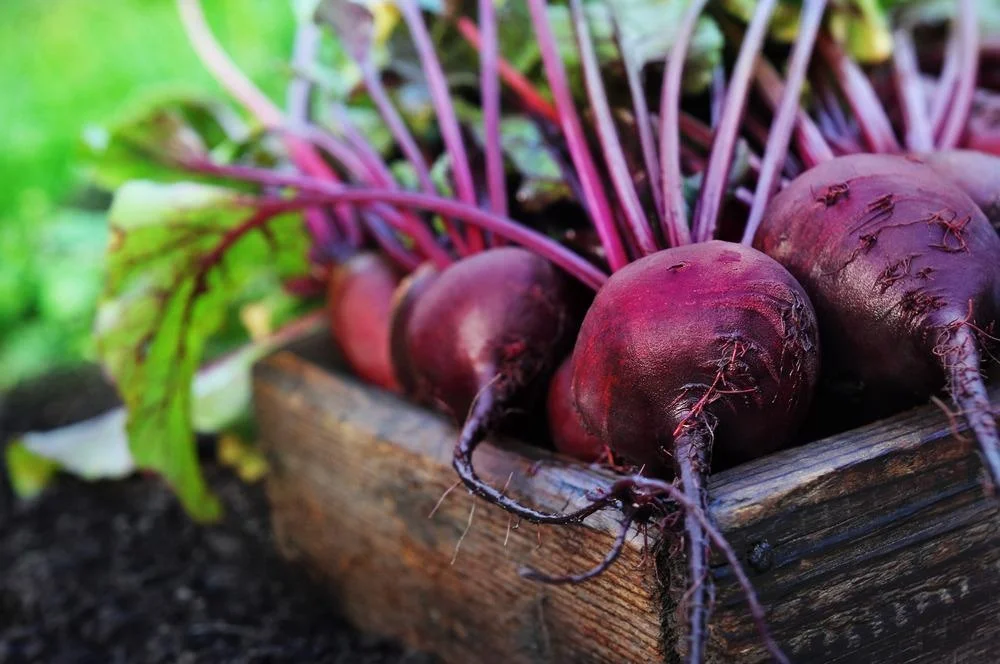
They do best in a sunny location. However, they will tolerate little shadow and thrive in a tree’s dappled light. The optimum soil is medium to light that hasn’t recently received manure; otherwise, the roots may not grow properly.
The plant is adaptable to the majority of typical situations, but the soil should be neutral or slightly alkaline (pH 6.5 to 7.5). They thrive in pots and containers as well. Soil should be devoid of pebbles and other obstructions in order to permit the round beetroot roots to grow properly.
Since plants like Swiss chard and spinach are relatives of beets and are susceptible to the same pests and diseases, avoid planting beets where those plants have recently been grown.
How to Grow Beetroots from Seeds
1. Selecting the Seeds
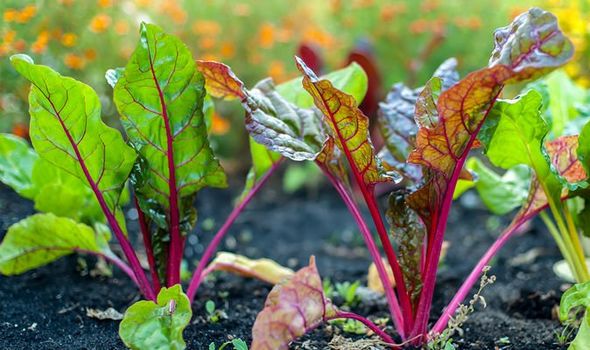
The climate is the most common cause for worry when it comes to planting, but you shouldn’t be anxious. All year long, beetroot roots can be grown. But cool weather would be ideal if you are picky about colour, texture, and quality.
There are numerous beetroot cultivars available. Along with the more typical rounder or oval roots, there are variations with long, cylindrical roots. There are varieties with crimson, orange, yellow, white, or even pink-and-white striped roots in addition to the signature deep purple-red.
Lighter colours are easier to deal with in the kitchen since they won’t stain your hands, but deep red and yellow colours have antioxidant properties that protect against oxidation. Darker roots typically have a richer, earthy flavour, while pale roots are milder and sweeter. Colour can also suggest flavour.
Make sure you purchase high-quality seeds from a dependable supplier when choosing your seeds. When buying seeds online and learning about gardening, it’s also a good idea to check consumer reviews and consult a professional.
2. Preparing the Soil
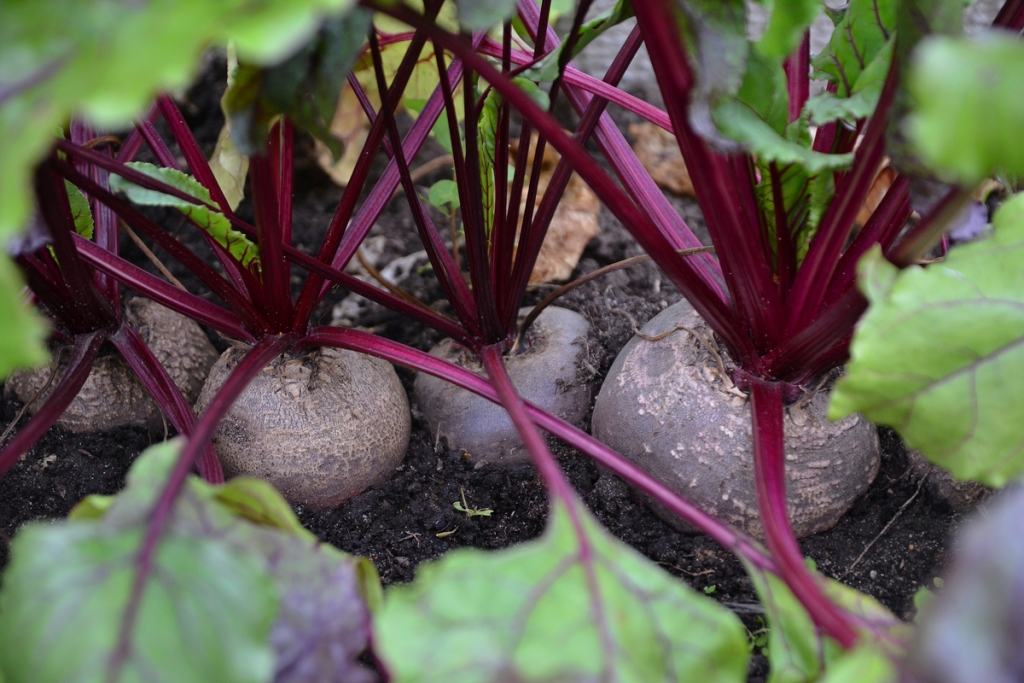
Before planting your beetroot seeds, the soil must be carefully prepared.
Prior to planting the seeds, clear the area of any stones or weeds. You can imagine how seedlings would struggle to mature if there were irritating stones nearby that kept them from growing normally. Similar to how weeds deprive newborn beetroot of vital nutrients and room.
In light to medium earth in a sunny, open location, beetroot thrives best. If the plot has already been manured for a previous harvest, there is no need to add further organic matter. If it wasn’t, then rake the soil and scatter some compost over it.
Because of its density, soil with a high percentage of clay may be difficult for beets to develop properly and is more likely to become oversaturated during wet spells and dry out too quickly during warm ones. To increase drainage, just add more organic matter to the soil, such as finely chopped bark, peat moss, or – even better – high-quality compost.
To give the organic matter enough time to break down and completely integrate into the soil, this should be done as far in advance of planting as feasible. Beetroot also prefers neutral soil that has a pH between 6.5 and 7.
Prepare your soil about two weeks before you are prepared to sow your seeds.
3. Planting Seeds
Beetroot seeds are large and easy to sow, frequently consisting of a cluster of seeds rather than a single seed. Although they can also be planted in pots or other containers, they are commonly sown straight into the ground from early spring until mid-summer. Regularly sowing tiny rows, roughly every three to four days, can help ensure long-term crops.
Sowing Seeds in Containers
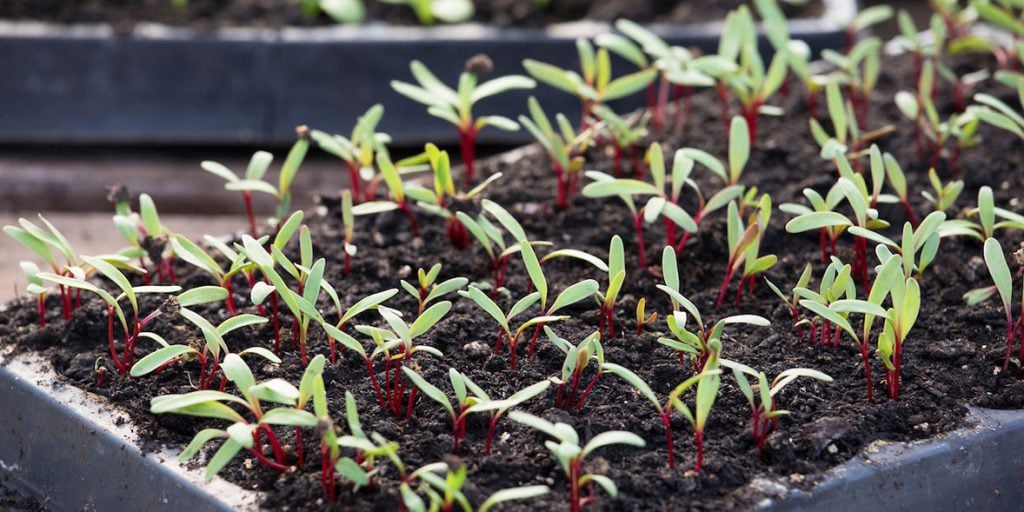
Beetroots can also be planted in big, multi-purpose containers that are at least 40 cm (16 in) wide.
- 🌱Promote Root Formation: Our grow bags for vegetables are made of high quality nonwoven fabric...
- 🌱Breathable and Drainage: Tomato grow bags have excellent drainage eliminating problems with over...
- 🌱Grow Healthily and Freely: The grow bag provided a suitable temperature and humidity for plant...
For growing seedlings or plants in containers, seed or potting, composts are used. A variety of commercially produced peat-free composts are available; they are prepared from a blend of different elements, such as loam, composted bark, coir, sand, and fertilizer. It is incorporated into the soil to increase its fertility, structure, and ability to retain water. Choose plants with rounded bases over those with long, deep roots.
Seeds for beets should be sown 2 cm (3/4″-1″) deep. Make sure to sow the seeds 10cm (4in) apart, then cover with about 2.5cm (1in) of compost. Planting them in rows will be the simplest. To prevent disturbing the seeds, water carefully.
Put the container in a warm, sunny location and give it regular watering.
Sowing Seeds Directly Into the Ground
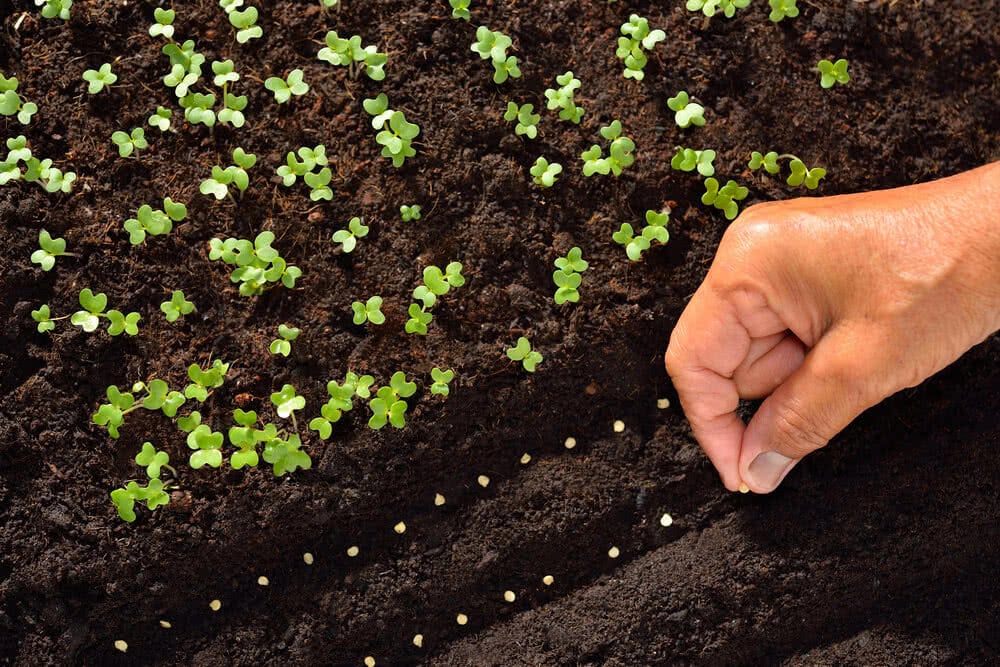
When the weather warms up in the spring, which is between late March and early April, the simplest option is to sow beetroot seeds outside. Beetroot can be kept starting in June and used in the winter.
Plant the seeds in drills at a depth of 2.5 cm and a distance of 30 cm after preparing the ground (see above). The corky seed clusters are easy to plant one at a time because they are huge. Plant the seeds 10 cm (4 in) apart after wetting the drill’s base.
To produce clusters of young veggies with smaller roots, you can group two or three seeds together and sow them 15cm (6in) apart. When there is little room available, this expansion strategy is especially helpful.
4. Nurturing
Watering
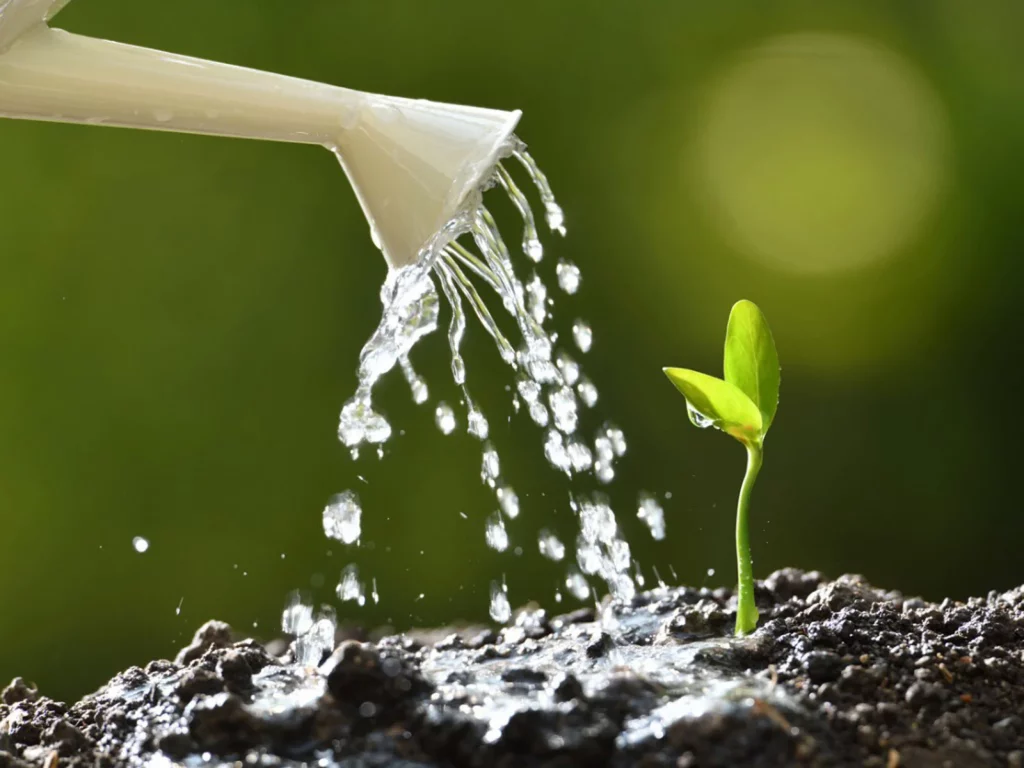
Water daily until the leaves begin to sprout. To begin the germination process, your seeds need a lot of water. Once established, the roots will absorb water from the soil.
Water the beetroot frequently. As a result, there is a lower chance of the roots breaking or becoming woody. In light of this, avoid overwatering. The likelihood of “bolting” (flowering but failing to produce a vegetable) increases when the beetroot has more leaves than roots.
Once you have sprouted, you should only water them every 10 to 14 days when it is dry outside. Unless the weather is unusually dry, typical rainfall should be okay.
Thinning
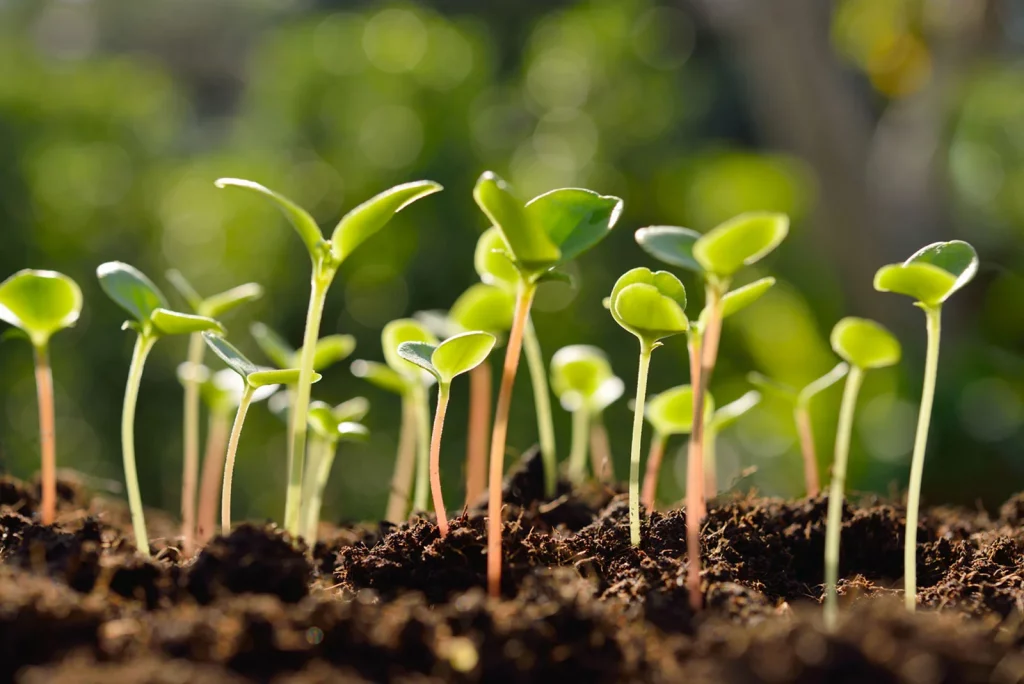
When your beetroot plants have about 2 cm of sprouting leaves, start cutting the weakest seedlings, and keep doing so until the surviving plants are as least 10 cm apart. Because each wrinkled beet “seed” is actually a cluster of 2 to 4 seeds, you should thin the young plants to a distance of 3 to 4 inches apart until the greens reach a height of around 4 to 5 inches. Their roots might enlarge to the proper size as a result.
Don’t pull the plants up when thinning since you can unintentionally disrupt the roots of the beets and the nearby plants you want to maintain. Simply use scissors or tweezers or pinch the greens off (and eat them) instead.
5. Harvesting
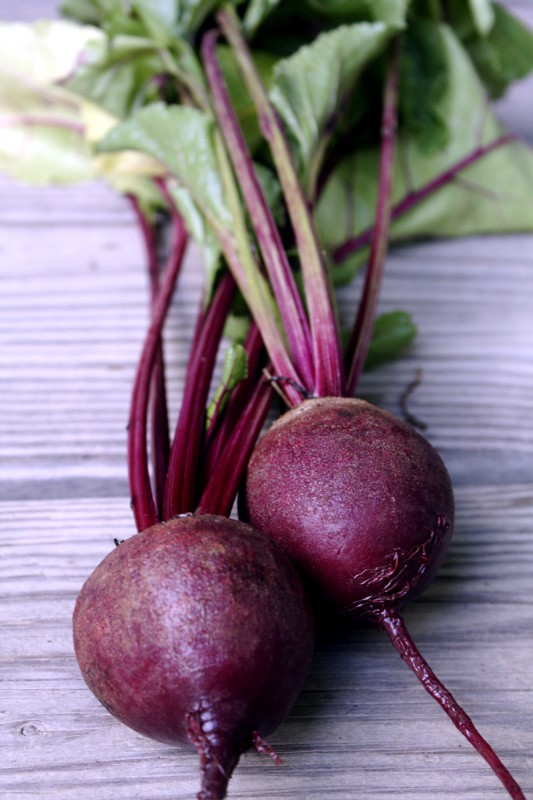
By cultivating numerous beetroot varieties, you can enjoy the harvest without storing it for a long period.
Although beetroot greens can be gathered at almost any time, it is preferable to begin when you are thinning seedlings. Up until the leaf blades reach a height of 6 inches or more and start to harden, choose one or two mature leaves per plant.
The majority of beetroot varieties typically need 55 to 70 days to mature. Or, strive for a 2-month harvest window following beetroot planting.
Baby beets can be harvested when they are 50 mm broad or left unharvested until they are the size of a small orange. Since very large roots could be hard and woody, they should be collected when they are the size of a golf ball or bigger. Pull the beetroot out of the ground by loosening the soil around it.
Beetroots may lose their sweetness and become woody if they are grown to an excessive size. Because younger, more delicate roots are preferred, it is best to choose beets earlier rather than later. The beetroot should be kept in damp sandboxes in a cool, dry location, like a garage or frost-free shed.
Caring Tips for Beetroots
1. Bolting
This happens when plants flower or fruit too early, which can happen when the soil is dry or deficient in organic matter. Make sure to add in the compost when preparing the soil.
2. Pests and Diseases
To stop pests like leaf miners from damaging the leaves of beet plants, think about covering the plants with a row cover. Another common disease is leaf spot, and the best way is to remove the leaf as soon as it is visible. Worms can also cause roots to bulge. At the seedling stage, keep birds away, or they will eat the young, tender leaves.
3. Weeding
Maintaining a weed-free environment surrounding your plants is a good idea. When removing weeds, use caution around young plants because beets have shallow roots that are simple to disturb.
4. Fertilizers
Add nitrogen to the soil, which is crucial for plant growth. To make sure it is distributed evenly, rake it into your soil. Finally, we advise fertilizing your soil just a little bit. Apply a nitrogen-rich fertilizer, such as sulfate of ammonia; if your plants aren’t growing vigorously, then water it in.
- Improves and accelerates seed germination and growth
- Increases productivity, improves the taste of the product and increases the durability of the...
- Promotes lateral growth and rich flowering
Conclusion
Beetroots are a colourful, cool-season crop that may be easily grown from seed and develops quickly in full sunlight. They are a great alternative for northern gardeners since they can endure frost and temperatures that are quite near freezing. As a result, they make great autumn crops.
The edible beetroot develops swiftly and is quite disease- and pest-resistant. The key to growing the best beets is having excellent, loose, fertile soil that has been adequately supplemented with well-rotted organic matter. Fresh, nearby-grown beets are great. Beetroot greens also have a unique flavour and are even more nutrient-dense than the roots.
The beetroot should be kept in damp sandboxes in a cool, dry location, like a garage or frost-free shed.
Happy gardening!
Let us know in the comments which other vegetables you like to grow at your home.
Frequently Asked Questions
What Is the Best Time to Plant Beetroot?
Beets are a fantastic vegetable to plant in both the spring and the late summer since they are designed to flourish in cool temperatures. When the weather starts to warm up in the spring, planting beetroot seeds outdoors is the simplest option. Plant seeds and seedlings all year round in warm climates as long as they are not moist.
How Long Does Beetroot Take to Grow from Seed?
Beetroot is a root crop that takes approximately two to three months to mature. Beetroot greens can be harvested at practically any time. However, it is best to start while thinning seedlings. You can wait to harvest the Bettroots until they are the size of a tiny orange. As long as the soil is properly prepared before planting, beetroot is a relatively simple crop to grow.
How Many Beetroots Do You Get from One Seed?
Just one beet comes from each beet plant. However, a single beet seed can sprout multiple beet plants during germination as Beetroot seed is naturally ‘multigerm’. The exterior seed coat needs to soften for several days or perhaps a week in order for the seeds inside to begin germination. So, when it comes to harvesting, take one baby beet from one clump.

